Many Tesla customers associate the Tesla chassis number, also known as VIN, with a crucial moment in the purchasing process: As soon as the VIN appears in the Tesla account after ordering, it means that the vehicle has been produced and is on its way to the customer – it won't be long until delivery.
In the meantime, you can use this Tesla VIN decoder to find out exactly what the chassis number means and interesting information about your vehicle. Find out what the vehicle identification number (VIN) actually means. Because most people don't know what it stands for.
In this article, we explain the meaning of each number and letter step by step. This will allow you to decipher your own Tesla VIN. And who knows, you might even learn something new.
Tesla chassis number: What is the VIN?
VIN stands for "Vehicle Identification Number," a unique number that unambiguously identifies the vehicle. In rare cases, the number is also found under the German abbreviation "FIN" (Fahrzeugidentifikationsnummer). The Tesla VIN is 17 characters long, the first eleven of which have a meaning that we will explain below. The last six represent a unique serial number.
Where can I find the VIN?
To check the Tesla VIN, you first need to know it. The number can be found in the German vehicle registration documents, on the driver's side B-pillar, and on a sticker below the windshield, also on the driver's side. For the latter, look for a small "window" in the lower part of the windshield near the windshield wipers.
The chassis number can also be viewed digitally once the Tesla VIN has been assigned: Scroll to the bottom in the Tesla app, access the "Software" menu in the vehicle, or in your user account. Check the Tesla website.
If you want to learn more about Tesla's digital offerings, you will find, for example, our extensive Tesla App Guide found it.
Tesla VIN Decoder: This is what the numbers mean
Once you've found the VIN, it's time to decode it. We've broken down the meaning of each part step by step – making decoding a breeze.
Tesla VIN Grünheide: Numbers 1-3 show the manufacturer
The first three digits of the vehicle identification number (VIN) indicate the manufacturer or place of manufacture. For Tesla, the following possibilities exist:
- 5YJ: Tesla in the USA (Model 3/S)
- 7G2: Tesla in the USA (Tesla Semi)
- 7SA: Tesla in the USA (Model X/Y)
- SFZ: Tesla Roadster (built in Great Britain)
- LRW: Tesla in Shanghai/China
- XP7: Tesla in Grünheide/Germany
Curious about the differences between the individual production facilities? Here we explain which factory the best Tesla quality delivers.
Tesla VIN Decoder: Item 4
The fourth digit of the chassis number specifies the vehicle model.This is relatively obvious in the case of Tesla, as it is related to the official model designations:
- S: Tesla Model S
- 3: Tesla Model 3
- X: Tesla Model X
- Y: Tesla Model Y
- R: Tesla Roadster
- T: Tesla Semi
- C: Tesla Cybertruck
Tesla VIN Decoder Model Y: Body type in digit 5
The fifth digit indicates the body type and steering wheel position of the Tesla, although some letters can have multiple meanings. This provides a bit more choice:
- A: 5 doors, left-hand drive, hatchback (Model S)/sedan (Model 3)
- B: 5 doors, right-hand drive, hatchback (Model S)/sedan (Model 3)/cabin (semi)
- C: 5 doors, left-hand drive, SUV
- D: 5 doors, right-hand drive, SUV
- E: Left-hand drive, 4 doors, sedan (Model 3)/3 doors, convertible (roadster)
- Q: 4 doors, right-hand drive, sedan
- G: 5 doors, left-hand drive, SUV crossover
- H: 5 doors, right-hand drive, SUV crossover
Tesla chassis number: Safety matters Number 6
Things get complicated with the sixth digit, as there are many possibilities. This digit encodes information about the installed safety equipment – such as seat belts, airbags, detection systems, and pedestrian protection.
- 1: Type 2 seat belts (2 front, 3 rear), front airbags, knee airbags (front), side airbags, PODS
- 3: Type 2 seat belts (2 front, 2 rear), front airbags, knee airbags (front), side airbags
- 4: Type 2 seat belts (2 front, 2 rear), front airbags, knee airbags (front), side airbags
- 5: Type 2 seat belts (2 front, 2 rear), front airbags, side airbags
- 6: Type 2 seat belts (2 front, 3 rear), front airbags, side airbags
- 7: Type 2 seat belts (2 front, 3 rear), front airbags, side airbags, active hood
- 8: Type 2 seat belts (2 front, 2 rear), front airbags, side airbags, active hood
- A: Type 2 seat belts (2 front, 3 second row, 2 third row), front airbags, knee airbags (front), side airbags, PODS
- B: Type 2 seat belts (2 front, 2 second row, 2 third row), front airbags, knee airbags (front), side airbags, PODS
- C: Type 2 seat belts (2 front, 2 second row, 2 third row), front airbags, side airbags, PODS
- D: Type 2 seat belts (2 front, 3 rear), front airbags, knee airbags (front), side airbags, PODS
- E: only Tesla Semi
PODS stands for "Passenger Occupant Detection System" and is a system that detects whether someone is currently occupying a particular seat. The system communicates with the airbags and determines whether and with what force they should be deployed in the event of an accident.
The active hood is a pedestrian protection system. If a collision with a pedestrian is detected, the rear part of the hood lifts by 80 millimeters, becoming more flexible. This reduces the risk of head injuries for the pedestrian.
By the way: Teslas are among the safest vehicles on the market and regularly receive top ratings in crash tests worldwide. Read on Teslabs to find out why. Safety in the Tesla so high.
Number 7: It's an electric car!
It's only in the seventh position of the Tesla VIN that it becomes truly clear that the vehicle in question is an electric car – if you hadn't already recognized that from the manufacturer, Tesla. Until 2013, this seventh digit coded the type and power of the charging module; for all cars produced from 2014 onwards, the Battery type encrypted.
- A: Charger with 10 kW charging capacity
- B: Charger with 20 kW charging capacity
- C: Charger with 10 kW charging capacity and DC fast charger
- D: Charger with 20 kW charging capacity and DC fast charger
- E: NMC/NCA battery (in cars produced in Shanghai). If the number 8 is "S", then it's a BYD LFP battery (in cars not produced in Shanghai). Otherwise, E simply stands for "Electric".
- Q: LFP battery. If the number 8 is "S", then the battery is from CATL.
- H: High-capacity NMC battery (85 kWh)
- S: NMC battery with standard capacity (60 kWh)
- V: Ultra-high capacity NMC battery (90 kWh)
Number 8: The engines
The eighth digit again offers a wide range of choices. It's about the motor – and Tesla has offered plenty since its founding. different engines It's installed. So it's no wonder that the eighth digit of the Tesla VIN 21 can take on different values. Let's take a look!
- 1: a standard 3-phase AC induction motor
- 2: two standard AC induction motors, 3-phase
- 3: a high-performance AC induction motor, 3-phase
- 4: two high-performance AC induction motors, 3-phase
- 5: two engines (Facelift Model S/X)
- 6: three engines (Model S/X Plaid)
- A: a standard or performance motor of the type “Wire Windings” (3#RP, Model 3)
- B: two standard "Wire Windings" type motors (3#DB, Model 3 or Semi)
- C: two performance motors of the type “Wire Windings” with 82 kWh battery (3#DP)
- D: a standard or performance motor of the type “Wire Windings” (Y#RP, Model Y)
- E: two standard "Wire Windings" type motors (Y#DB, Model Y)
- Q: two performance motors of the type “Wire Windings” (Y#DP)
- G: unspecified motor, 51–60 kWh battery
- J: a standard/performance motor of the type “Hairpin Windings” (Y#RP, 3#RP)
- K: two standard "Hairpin Windings" type motors (Y#DB, 3#DB)
- L: two performance motors of the type “Hairpin Windings” (Y#DP, 3#DP)
- N: a standard motor, 81–90 kWh battery
- P: a performance motor, 81–90 kWh battery
- R: a Standard motor of type “Wire Windings” (Y#RB, 3#RB)
- S: a Standard motor of type “Hairpin Windings” (Y#RB, 3#RB)
- T: Two performance engines
Special Item 9: The check digit
The check digit is found in the ninth position of the chassis number.This can be used to check the authenticity and correctness of the VIN – because if the VIN was subsequently changed or incorrectly issued, the check digit will no longer be correct.
To obtain the check digit, all letters of the VIN are first replaced with numbers according to the table below. Then, each of the 16 numbers (VIN without the check digit) is multiplied by a factor. This factor ranges from 2 to 10 and then again from 2 to 9, proceeding from right to left in the VIN.
The 17th digit of the VIN is multiplied by 2, the 16th by 3, and so on. The ninth digit is multiplied by 10, before the eighth digit is multiplied again, starting at 2. Finally, the very first digit of the VIN is multiplied by 9. All the numbers obtained in this way are added together. The resulting sum is divided by 11. The remainder (0 to 10) from the division is the check digit of the VIN. If the remainder is ten, the check digit "X" is used.
Therefore, if you want to check the correctness of your VIN, follow the steps mentioned and check if the result matches the check digit of your chassis number.
| A, Ä, J | 1 |
| B, K, S | 2 |
| C, L, T | 3 |
| D, M, U, Ü | 4 |
| E, N, V | 5 |
| F, , W | 6 |
| G, P, X | 7 |
| H, Q, Y | 8 |
| I, R, Z | 9 |
| O, Ö | 0 |
Number 10: The model year
The tenth position of the Tesla VIN encodes the vehicle's model year. The current range is from 2006 to 2025.
- 6: 2006
- 7: 2007
- 8: 2008
- 9: 2009
- A: 2010
- B: 2011
- C: 2012
- D: 2013
- E: 2014
- Q: 2015
- G: 2016
- H: 2017
- J: 2018
- K: 2019
- L: 2020
- M: 2021
- N: 2022
- P: 2023
- R: 2024
- S: 2025
Number 11: The place of manufacture in eleventh place
The eleventh digit of the VIN reveals the exact production location of the car. This digit is even more detailed than digits 1-3, which code the manufacturer and therefore at least the country.
- 1: California, Menlo Park
- 3: Great Britain, Hethel (Roadster)
- A: Texas, Austin
- B: Germany, Berlin/Grünheide
- C: China, Shanghai
- Q: California, Fremont
- G: Germany, Berlin/Grünheide
- N: Nevada, Reno
- P: California, Palo Alto
- R: Development/Research
The six-digit serial number
The last six digits of the Tesla VIN are a unique serial number that uniquely identifies the individual vehicle.No two vehicles in the world have the same last six digits.
While the last five digits serve purely to identify the vehicle, the first digit of the serial number can still have a meaning if it is one of the following letters:
- A: Prototype Stage Alpha
- B: Prototype Stadium Beta
- E: Evaluation prototype (Roadster)
- Q: Founder Series (Roadsters number 1 to 1000)
- M: drivable prototype (roadster)
- P: Production vehicle (only the first 100,000 Model S vehicles)
- R: Release candidate
- S: Signature Series (first 1000 Model S/X)
- V: Validation prototype (Roadster)
If the first digit of the serial number has a different value (usually a number), then it is a "normal" production vehicle.
Everything decoded?
You did it! You've reached the end and successfully decoded your Tesla VIN. You probably learned a thing or two that you didn't know before, right?
If you want to learn more about Model 3, Model Y and similar vehicles, take a look at our Blog over Or treat your Tesla to something worthwhile. Accesories.
What experiences have you had with the VIN? Let us know in the comments!
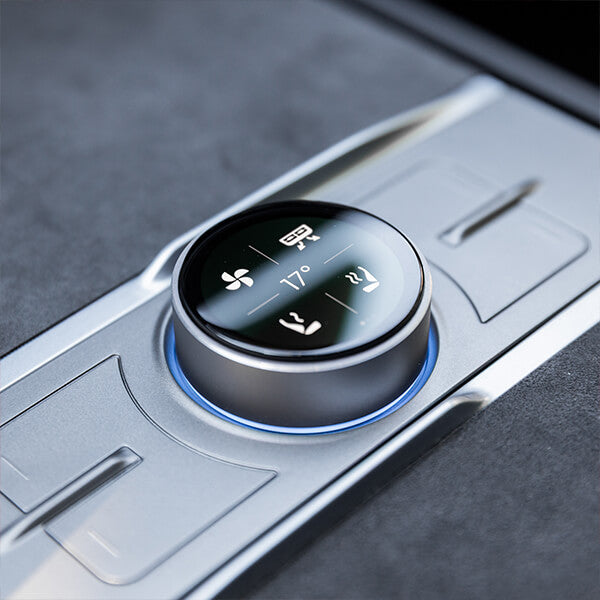
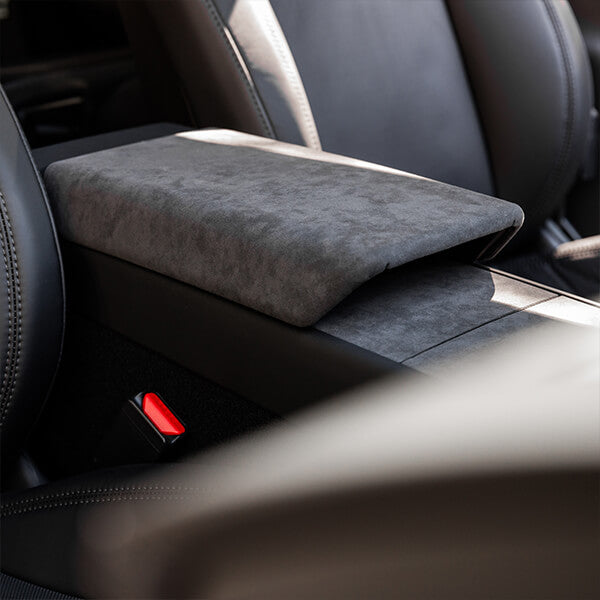
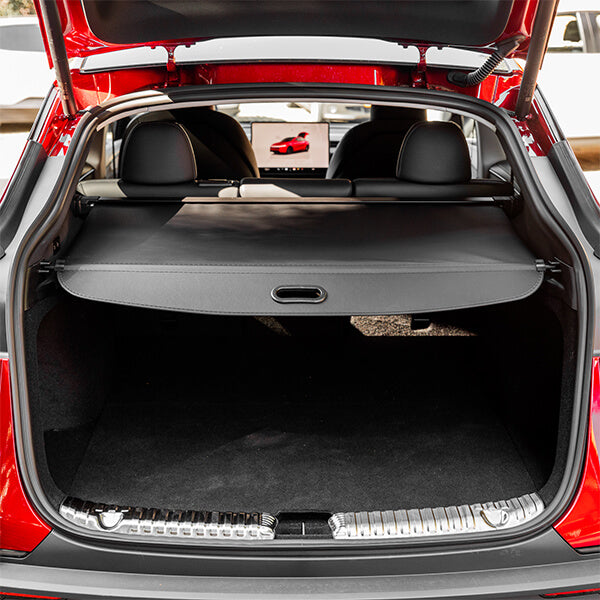
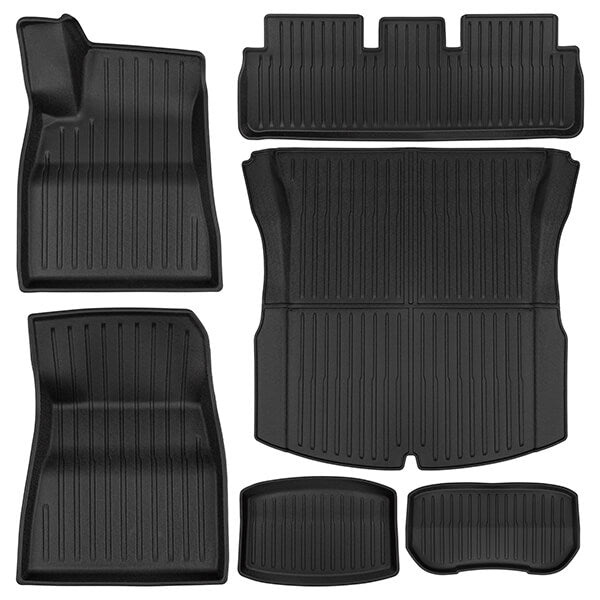
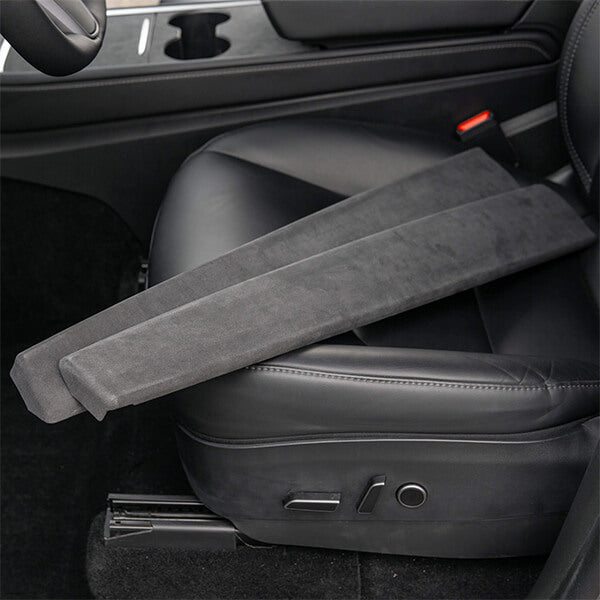
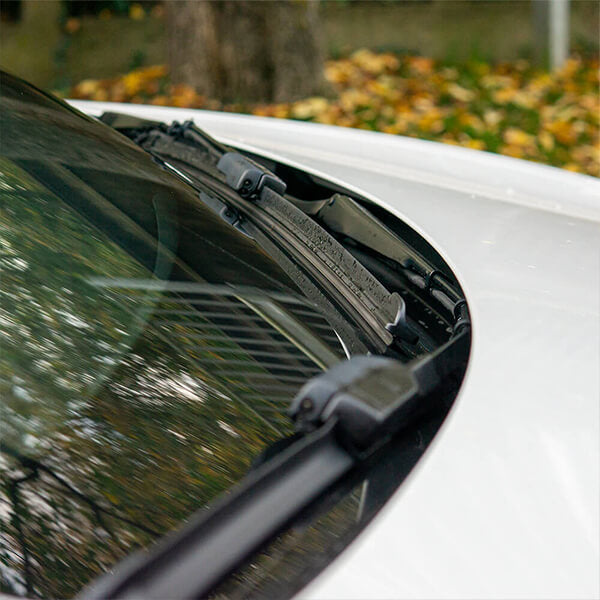
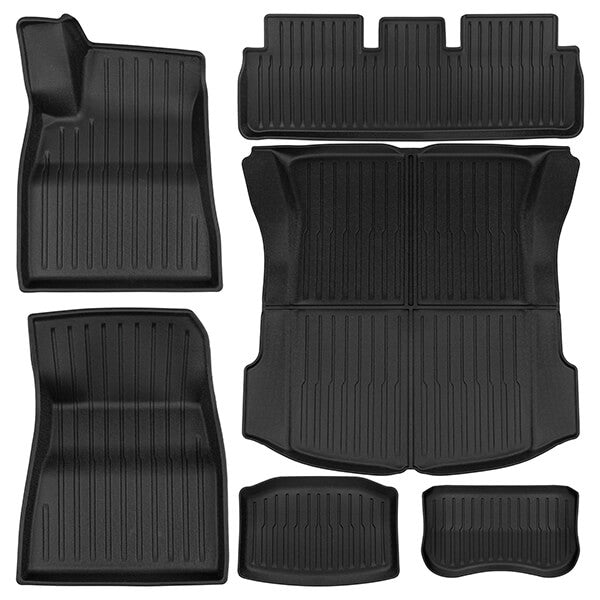
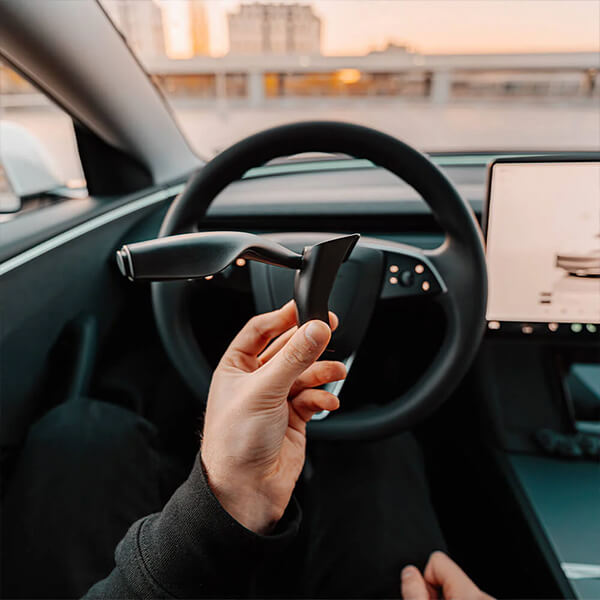
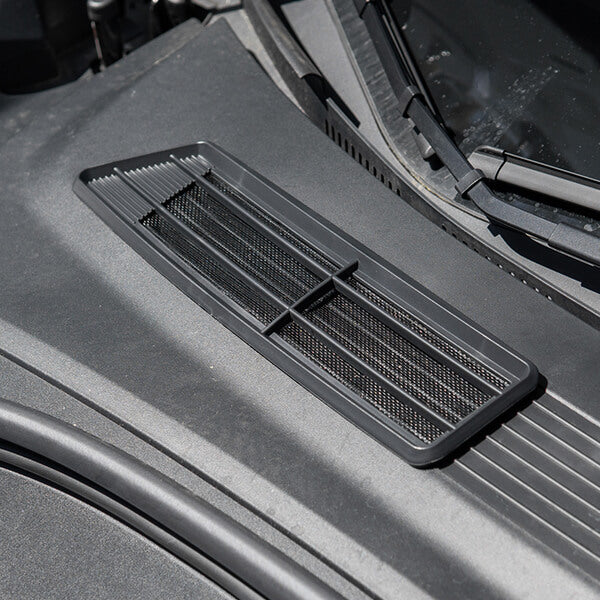
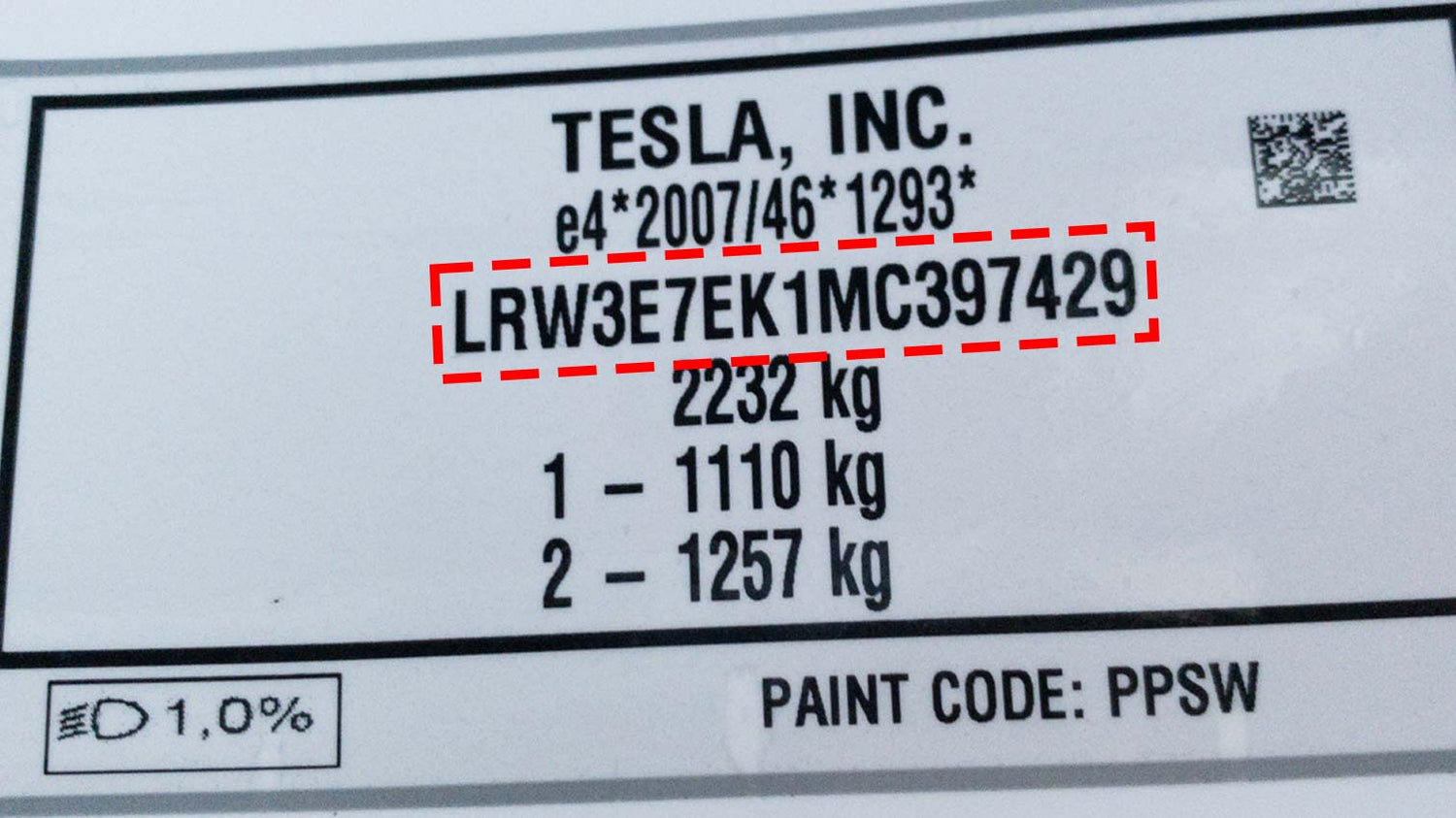
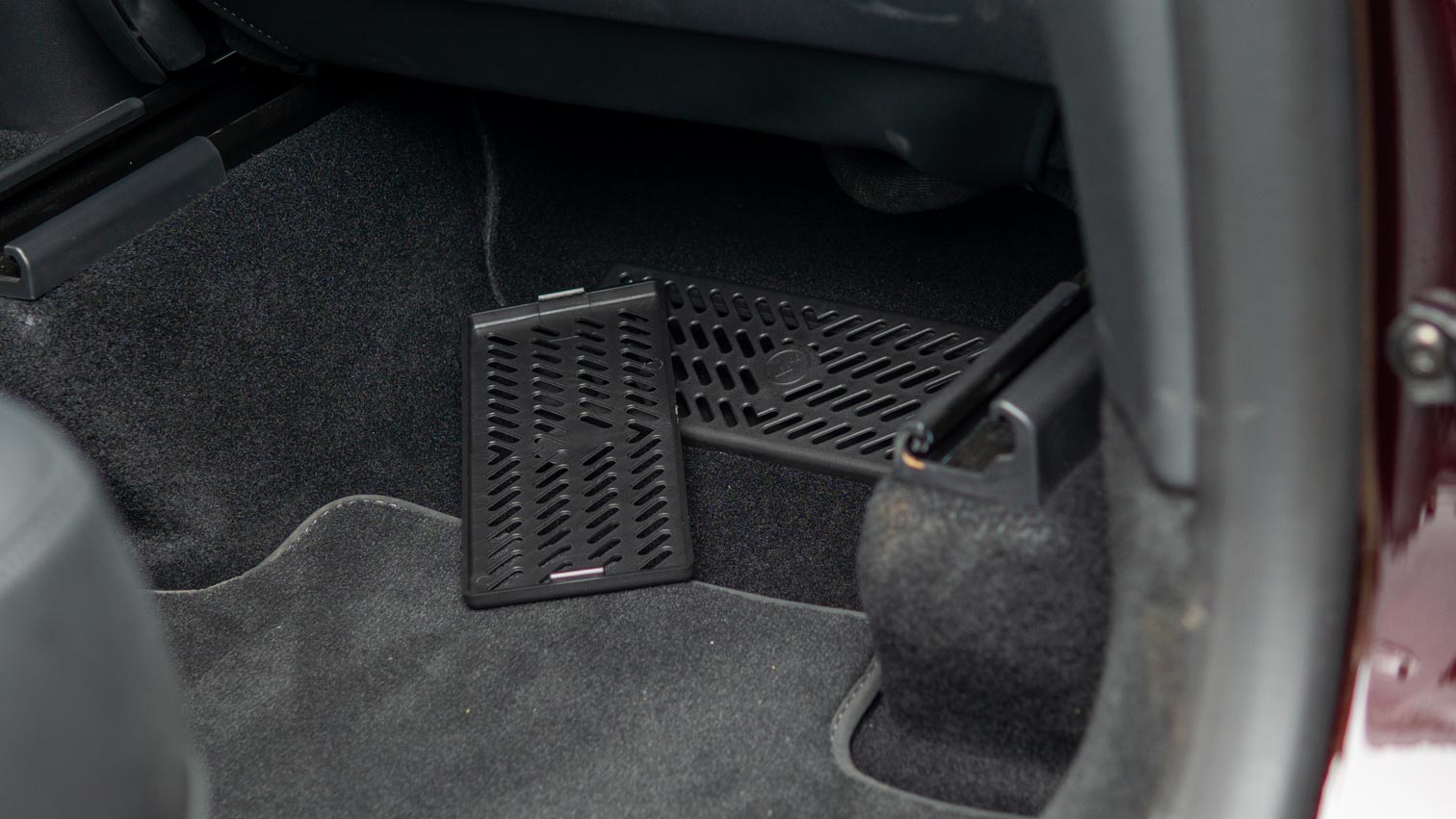
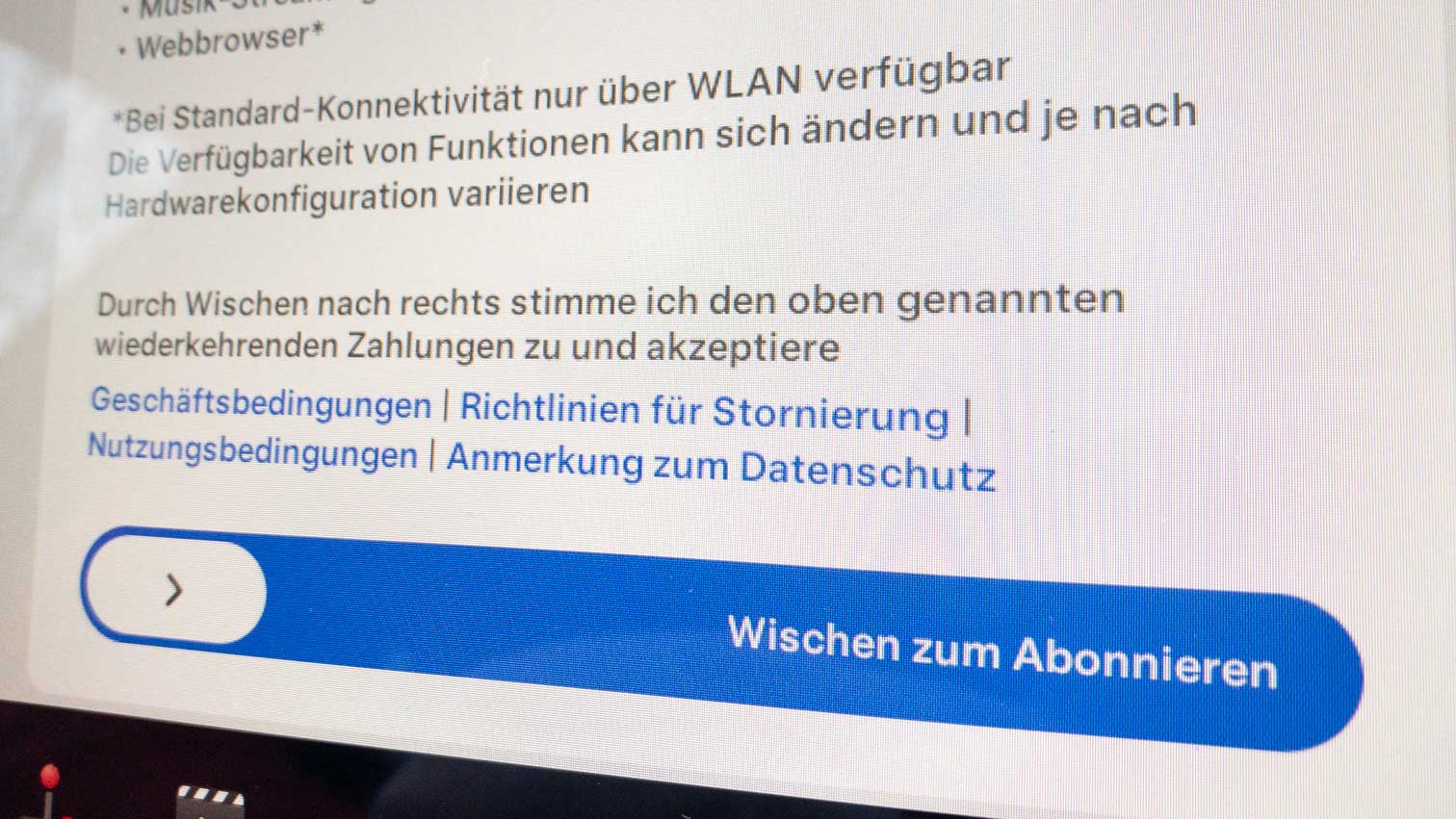
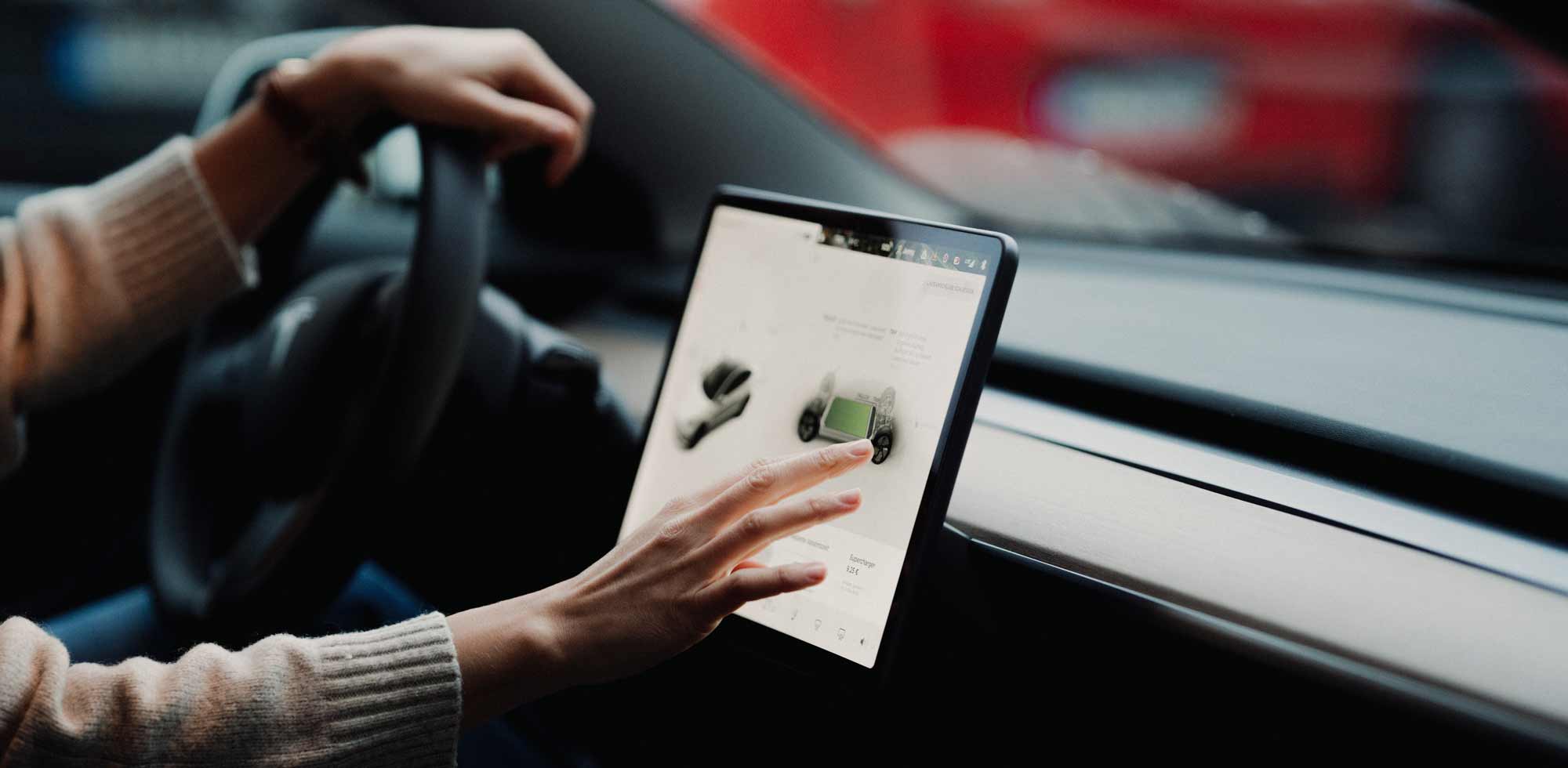
2 Comments
Steffen Wunderlich
Wie erfahre ich das Datum, an dem das Model Y das Herstellungswerk verlassen hat?
Wie erfahre ich das Datum, an dem das Model Y das Herstellungswerk verlassen hat?
André
Danke!
Danke!